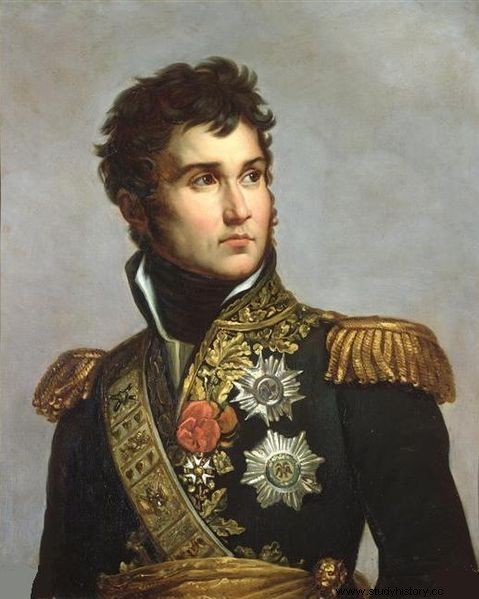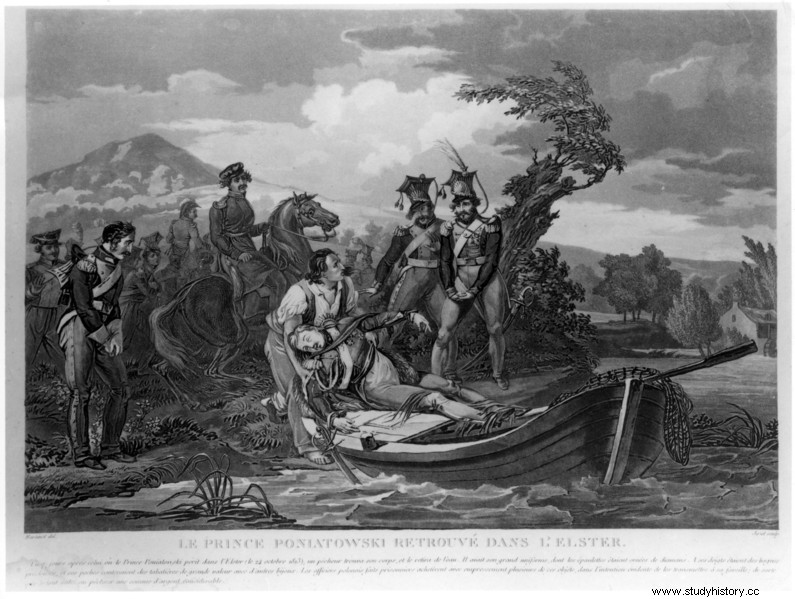Bonaparte has crossed many boundaries in his career. In his rush for fame and glory, he crossed the barriers set by the existing linear strategic and tactical doctrines, creating an army of a new type. Taking human life for nothing, he repeatedly exceeded the endurance of his soldiers. However, he also did not spare himself by exceeding the limits of his common sense.
Naturally, on his way, he also had to deal with geographic boundaries, which were ... rivers, or rather bridges over them. The great strategic importance of the bridges and their exposed location during the battle - this is where there were often or not the fighting sides - meant that the events on the crossings attracted the attention of observers from both banks of the rivers.
Thus, the bridges were a perfect stage for non-trivial, even heroic deeds. And the colorful, dramatic and resonant bridge battles can be considered one of the symbols of the Napoleonic era.
Italian campaign
It started at Lodi. It was there on May 10, 1796, under the worn boots of the French from the Italian Army, the boards of the bridge over the Adda creaked. The Austrians, despite the swift actions of the French troops, managed to take up defensive positions across the river. From the east bank of the Adda, Austrian guns were shelling the bridge from the front and from both flanks.
Pulled up by Napoleon's own artillery engaged in a murderous fire duel with the enemy, and a compact column of grenadiers moved through the crossing . The Austrians redoubled their fire, which torn bloody furrows in the French ranks. At some point, the attack stopped. It was only the encouragement of Bonaparte and the personal example of Generals Lannes, Berthier, Dallemagne and Masséna, who rushed to the front of the confused grenadier lines, that the situation was brought under control. After several dozen seconds of bloody bayonet combat, the bridge was captured.

Napoleon Bonaparte in 1805
A few months later at Arcole, the Austrians put up strong resistance to the crossing over the Alpone River. The French advance guard was not able to get the bridge from the march and, suffering heavy losses, had to withdraw. The commander of General Augereau in this section, outraged by the retreat of his troops, kidnapped the banner and with the cry:"Cowards, are you so afraid of death?" He led two battalions of grenadiers to attack.
However, enthusiasm had to give way to the onslaught of Austrians. Then Bonaparte seized the tricolor banner of the republic and running up the bridge, he exclaimed, "Aren't you soldiers from Lodi anymore?"
The attitude of the commander-in-chief made the French fight again. The daring attack, however, broke down again, and Napoleon himself miraculously escaped the shot, covered - as the legend has it - with the body of his aide-de-camp, Colonel Mourion. The bullet intended for the commander of the Italian Army turned out to be fatal for the brave colonel. In the hustle and bustle of battle, Bonaparte was hauled in by his frontline comrades and accidentally pushed into the coastal mud. It was difficult to get him out of there under the massive enemy fire. The bridge at Arcole was captured by the French only after two days of fighting (November 17), and the Austrians were forced to retreat.
The fame of the Battle of Arcole far exceeded its considerable military importance. Napoleonic propaganda - especially paintings - meant that until today the struggle over Alpone is identified with the image of a young and insanely brave Napoleon leading soldiers to attack the bridge.
Rhine, Danube and department general
There were also such crossings which, admittedly, were not fought for, but which still became an element of the developing history and legend of Napoleon. On the night of September 24-25, 1805, the French army began to cross the bridge over the Rhine - the war with the Third Anti-French Coalition began. Less than a year ago, Napoleon was crowned Emperor of the French of the French despite the heavy rain, he personally supervised the fulfillment of all orders.
He was standing on the bridge until the first columns had passed and lined up on the opposite bank. The Napoleonic hat was soaked that its horns fell on the imperial shoulders, resembling the cap of the Parisian charcoal burners. However, this did not diminish the majesty of the owner in any way, and patient persistence at the bridge post cheered the soldiers.
Soon an unusual situation occurred at the next bridge, this time over Lech. Here is a certain soldier, demoted the day before by his commander, noticed that he was drowning in the currents of the river. Without thinking long, he rushed to save his superior and saved his life . The emperor probably witnessed the event, and appreciating his courage and his lack of resentment to the perpetrator of the demotion, restored his previous charge.

Jean Lannes was one of Napoleon's most courageous commanders
Mostom, however, was much better in the bloody entourage. Here on October 14, near Elchingen, the fight for the crossing on the Danube became an opportunity for a duel of courage between the imperial marshals - Ney and Murat. The former was ordered to seize the burned bridge in the city. Ney's sappers, under the murderous fire of the enemy and the watchful eye of their commander, first rebuilt the bridge, and then the red-haired marshal invited Murat to join the attack - with whom they had been barking for a long time. The first Grand Army cavalryman did not accept the invitation, however, and Ney led the attack alone, finally winning the crossing.
A few weeks later, the Danube bridge under Spitz was the subject of an extraordinary stratagem in the history of wars. The crossing, which was crucial for the success of Napoleon's plans, was undermined by the Austrians, and on the other side there were Austrian infantry and artillery. So the traditional bridge conquest was not an option.
It was then that Lannes and Murat, for whom there was an opportunity to rehabilitate for an act of cowardice at Elchingen, drove in parade uniforms to the Austrian detectors and convinced the Austrian commander, ready to blow up the bridge, that the fighting parties had already concluded a truce . They did it with such imagination and determination that before the Austrian knew, the bridge was in French hands. The marshals' self-confidence was not disturbed even by the aiming of one of the cannons at them by a more sober-minded Austrian gunner - Marshal Lannes simply sat on the barrel, taking nothing of the danger.
Russian roulette
The bridge under Frydland on June 14, 1807 became one of the reasons for the Russians' failure. At one point, Napoleon, who was present on the battlefield, noticed the mistake of the Russian command, which, wishing to move the army to the other side of the Łyna River as soon as possible, concentrated them in the bend of the river. The crowded masses of soldiers had limited room for maneuver, making them an easy target for French cannons. The decimated tsarist ranks rushed to the only bridge in this place. However, probably one of the Muscovites set fire to it in a panic and several thousand Russians lost the possibility of retreat, falling prey to the attacking Ney.
However, not only the Napoleonic successes walked on the boards of the bridges of contemporary Europe. On May 21-22, 1809, when the Austrians broke the crossing on the Danube twice, the battle of Aspern and Essling, which had successfully begun for Napoleon, turned into the emperor's first defeat. Struggling with the Habsburgs for a day and a half, the Grand Army eventually had to fight not so much for honor as for its own skin - it was close, and Waterloo would be unnecessary at all.

The Battle of Essling cost the lives of many of Napoleon's talented officers. Prince Jean Lannes was also among them. Pictured is a painting by Albert Paul Bourgeois
Over three years later, the bridges over Berezyn witnessed the inevitable sunset from Austerlitz. After General Dąbrowski failed, despite his bloody efforts, to keep the crossings in Borysów , Napoleon ordered the construction of two bridges under Studzianka. French and Polish sappers, standing waist-deep in the icy water and pushing their hands against the pressing ice floe, opened the remains of the Great Army the only escape route . On the morning of November 29, 1812, at the emperor's order, the bridges were set on fire, cutting themselves off from the enemy, at least for a while, by the freezing waters of Berezina.
Battle of the nations
Within a year, the next bridge was forever inscribed in the legend of the Napoleonic era. Fighting the whole of Europe near Leipzig, the emperor understood that he would not win this battle and on the night of October 18-19, 1813, he started the withdrawal of the army by Elster. He entrusted the protection of the retreat, among others, by soldiers , Fr. Poniatowski, the newly appointed Marshal of France. The crossing proceeded quite smoothly until the Russian regiments appeared on the wing. At this sight, a panicked French sapper, ignoring the fact that not all troops crossed over to the other side, blown up the previously mined bridge.
In this way, he cut off 15 thousand. soldiers, including Poniatowski. The prince, wounded many times, while trying to cross the river on horseback, drowned in the currents of Elstera.

Death of Prince Józef Poniatowski
There were other bridges in the history of the Napoleonic Wars, with perhaps no less dramatic stories in the background. However, this Leipzig bridge seems to span both sides of the epoch that began on the boards of the Lodi crossing.
